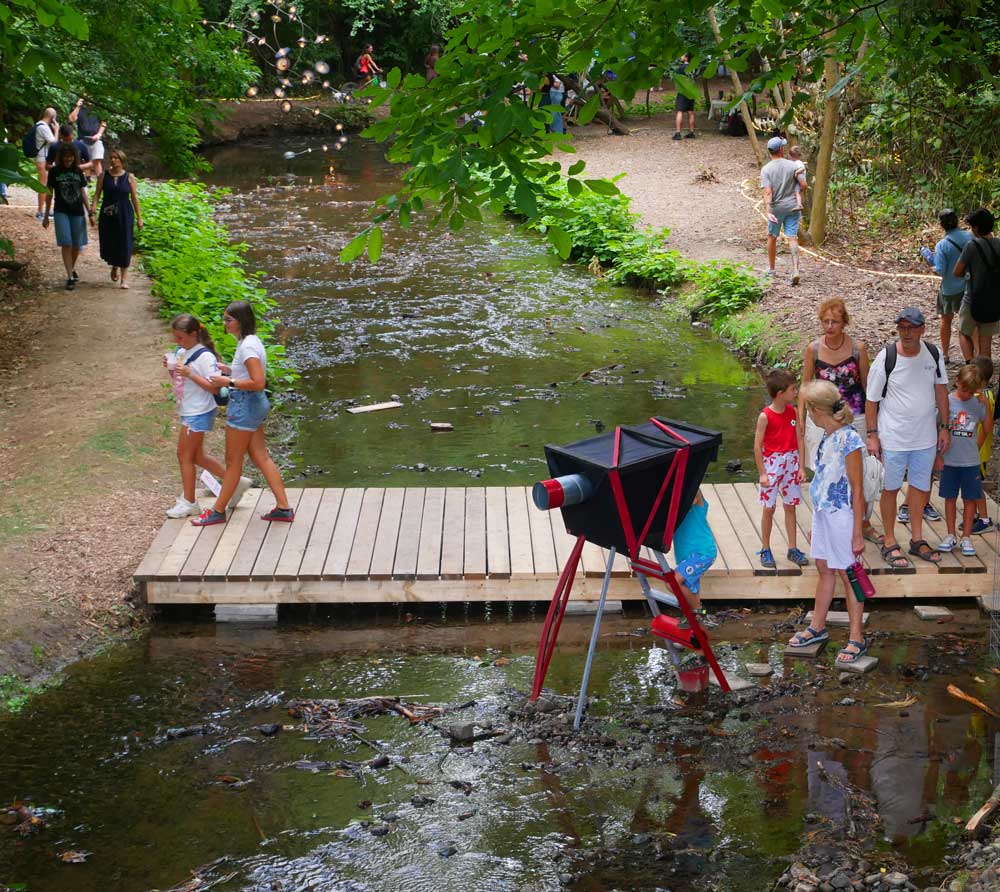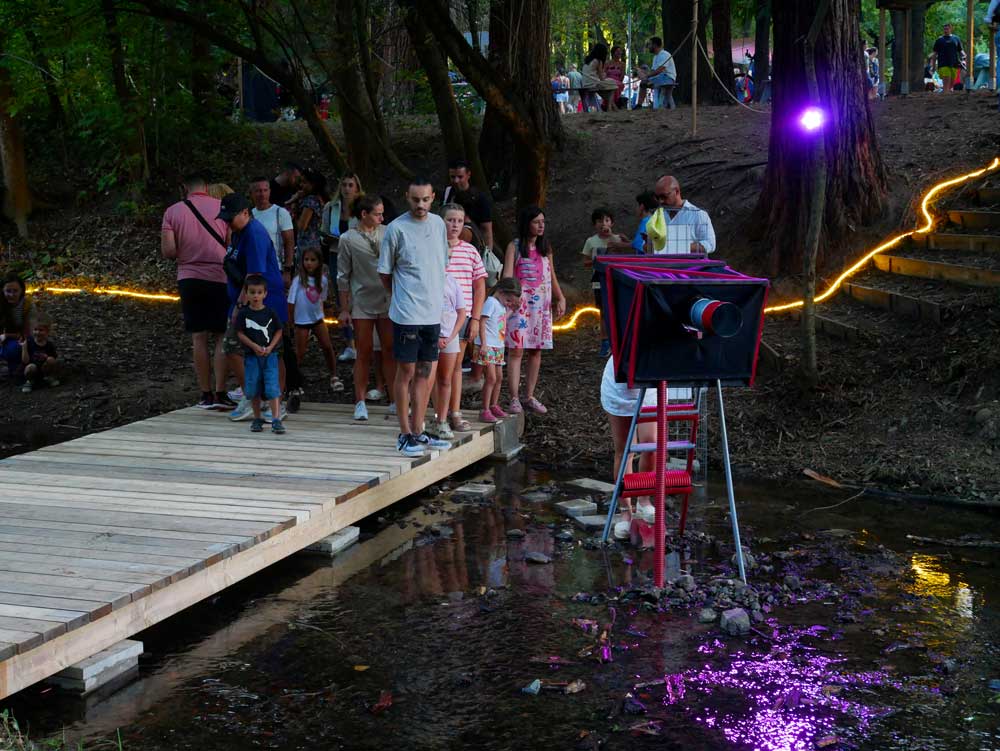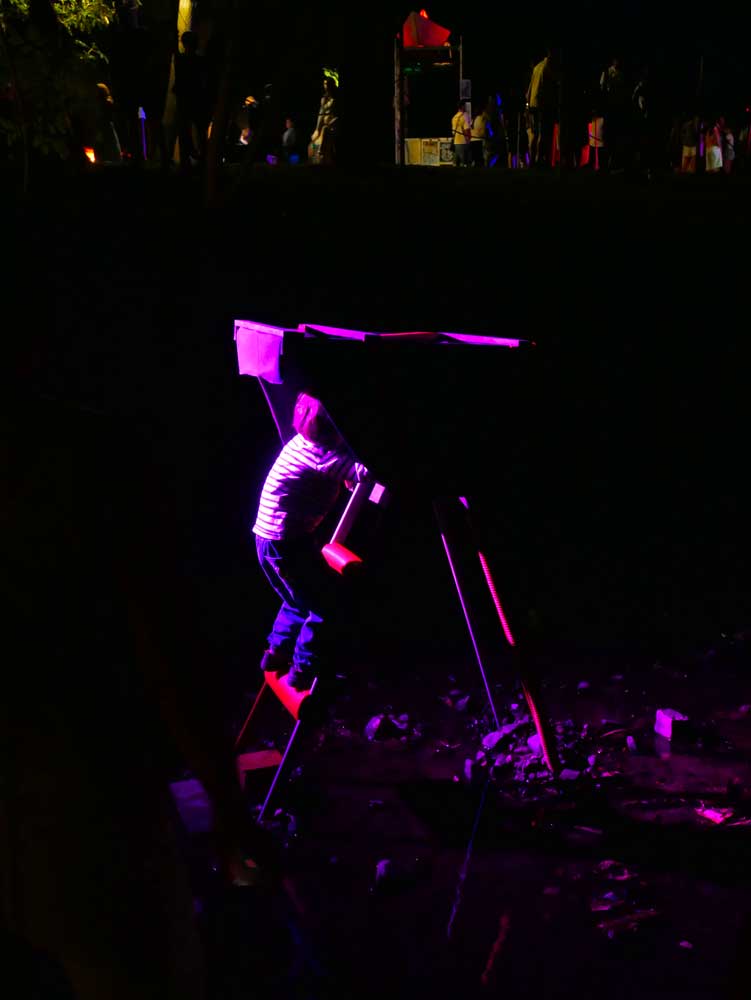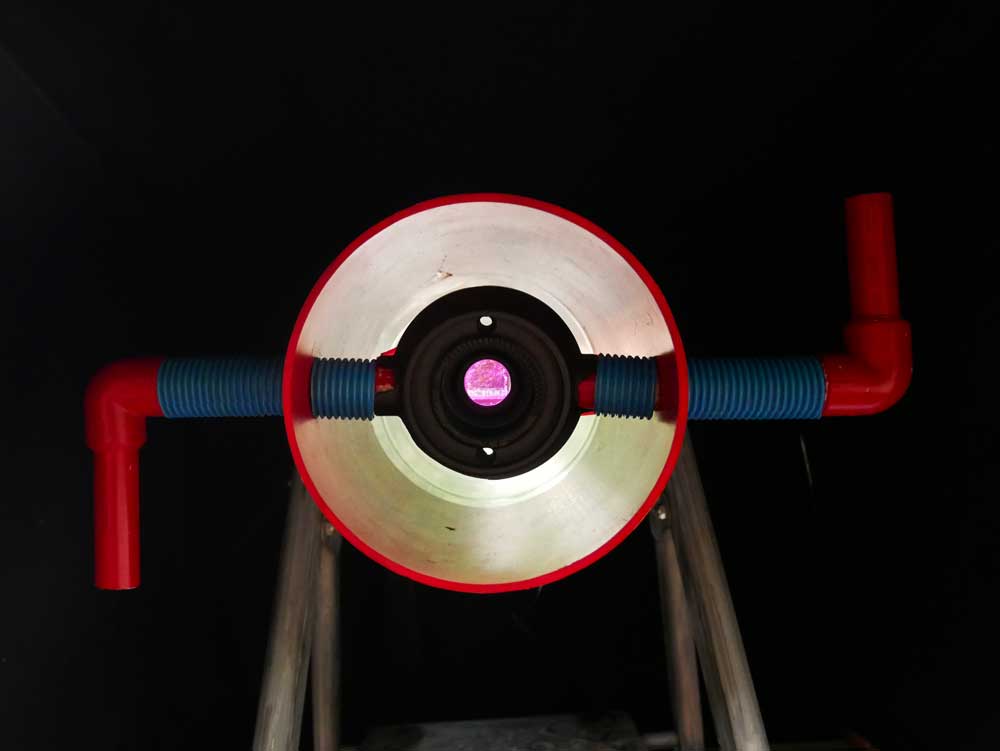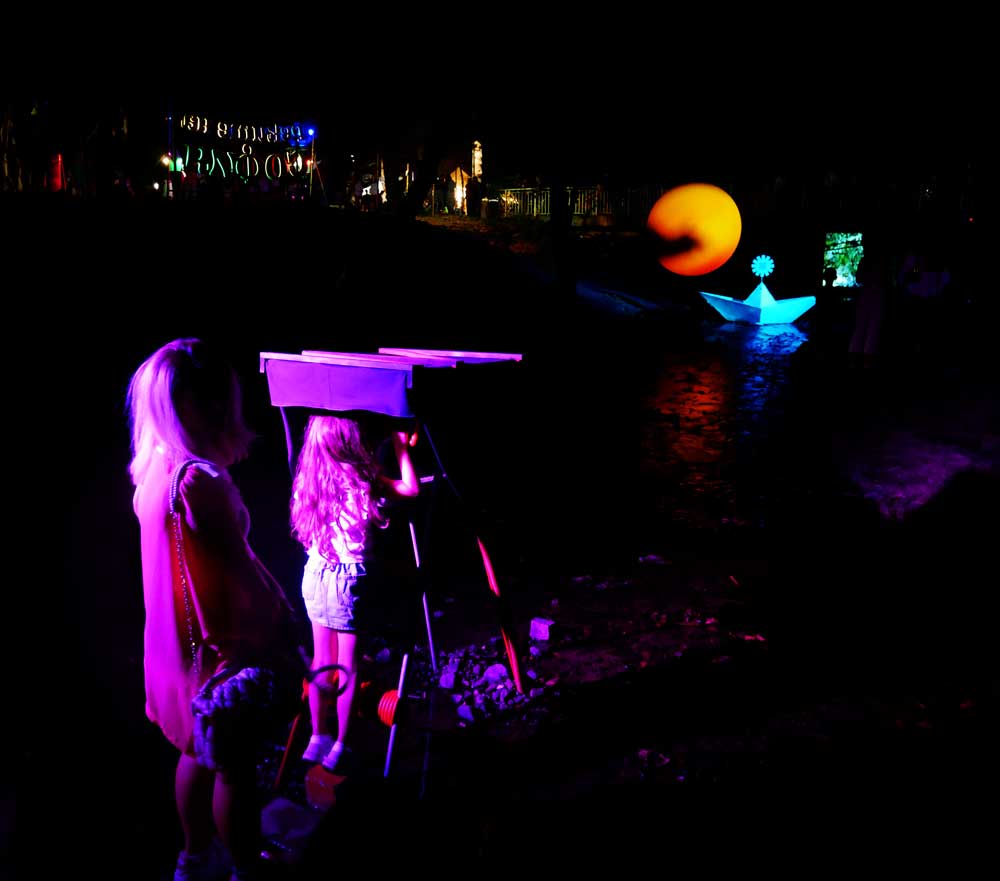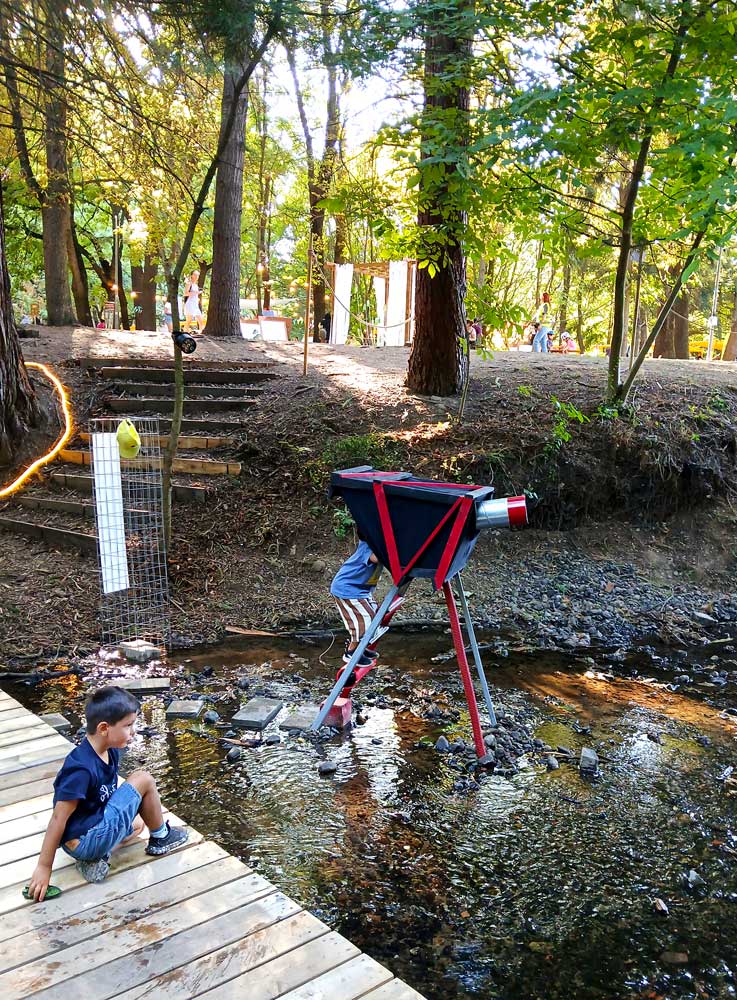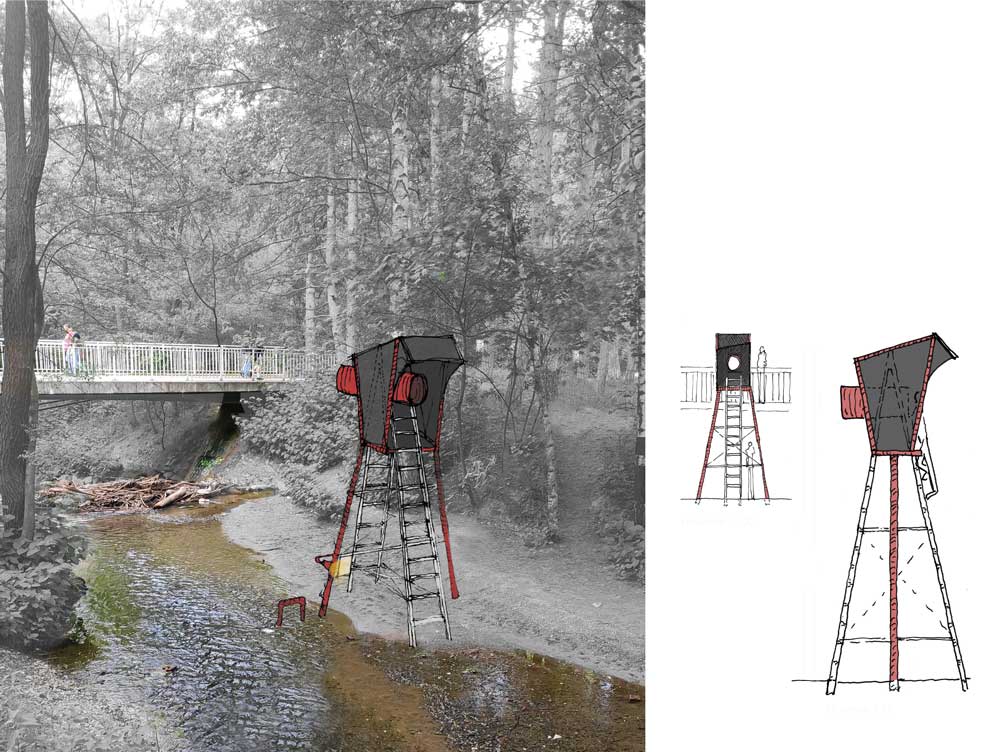The Human Observatory, Museum from the Future, Sofia, Bulgaria
Station d'observation à être humains, Musée du Future, Sofia, Bulgarie
Designed and built by Ekaterina Leondieva and Julien Clabecq
Project selected for the festival “Rivers of Sofia” on the 29-31st August 2025
Organized by the Collective, КОЛЕКТИВЪТ
MUSEUM FROM THE FUTURE
The Museum from the Future is an interconnected series of 6 interactive site-specific installations exposing the ways in which we think about water, resources, waste and nature. The structures are linked through a fictional story placed in a future world that has experienced an environmental collapse. Our descendants of the future have engaged in the archeological and anthropological study of the past through remains and artefacts they uncover in their environment. They have created a museum which can show to their contemporaries how humans of the past (ourselves) lived and thought. The exhibition unfolds within the festival site highlighting specific “archeological finds” or providing interactive and educational installations. Each installation builds up the story and reveals the contradictions and peculiarities of our way of life in a witty and playful manner.
The Human Observatory
The human observatory reflects on our relationship with water and rivers. A one-person observatory resembling an old-fashioned camera faces the bridge where people often stop to admire the view of the nearby waterfall.
The makeshift observatory is built of an old ladder, pipes, fabric and other found materials. Visitors look through a pipe viewing device at the bridge, observing people pausing to enjoy the water. Inside the museum’s logic, this is presented as “archival documentary footage” – evidence that people once felt connection to water.
This installation wraps up the exhibition and raises a question: if people loved water, why did they keep polluting it?
To the visitors
Look into the pipe to glimpse rare evidence of the customs of people from the past. They seemed to find joy in water, in the sounds and freshness of rivers, as can be seen in these archival images. Why, despite that, they kept polluting them is unknown and subject to further investigation.
The language of the pipe
Visually and conceptually all of the 6 installations are linked through the pipe as a main structural and symbolic element. A flexible red pipeline runs through the festival site and guides the Museum visitors, emerging in places that lead to installations. All pipes will be painted red in order to visually connect the installations.
The pipe and accessories connected to it relate to the displacement and control of water. They are symbols of modernity, progress and comfort and also a way to transport energy.
Pipes are witnesses of our industrial era. The pipe is embodying the contradiction of the world we live in: between modernity, comfort, progress and exploitation, pollution, destruction. This is why we chose the concept of pipes as a vehicle to tell the story of our world and throughout the installations we utilize the pipes as an observation device.
Scavenging and upcyling
Sustainability is the core theme of our installations, therefore all installations are constructed from found upcycled parts and elements. This creates a rough makeshift aesthetic that match the story of a fictional dystopian world in which humans are likely to scavenge old materials and use them to construct things.
Check out the other installations
